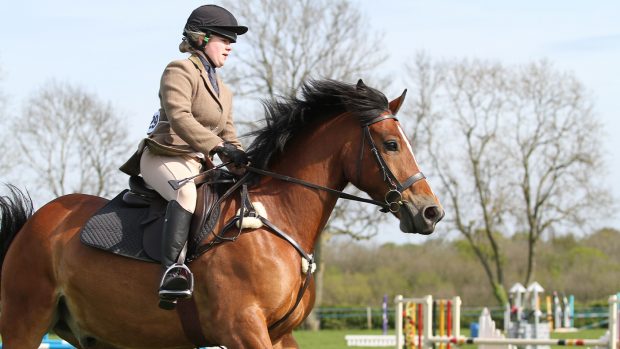Detailed research into the use of breastplates has shown they can have a “significant” effect on the way a horse jumps, according to tack manufacturer Fairfax.
The study, carried out by Fairfax with horse and rider analysis specialists Centaur Biomechanics, found horses wearing breastplates made a different shape over a fence to when they were jumped without them.
The researchers used the latest scientific technology to analyse as eventers Andrew Hoy, Tom Jackson, Kitty King and Emilie Chandler rode experienced horses over the same fence, without a breastplate, and then in each of a number of different makes.
“Centaur Biomechanics’ cameras, which capture movement at 400 frames per second (33 times faster than the human eye), examined and compared the action of each horse in take-off, flight and landing,” said a spokesman for Fairfax.
“Regardless of breastplate design, analysis showed that the whole jump is adversely affected from the moment when the horse is at the peak of take-off and its shoulder is in its most forward position – this is the moment of peak pressure.”
The study found that the arc made over the fence, from take-off to landing, was shortened, with the horses landing at a steeper angle, when they wore the breastplates.
“In the landing phase, the joints of the hind legs flex more in an attempt to clear the fence and the legs appear ‘cramped’,” the spokesman added.
“This over-flexing of the joints causes increased wear and tear on the horse’s limbs and any negative effects on the horse’s natural action mean he has to put more effort into every jump and will exacerbate fatigue, especially over a long or tricky course.”
As a result of the research, Fairfax has developed a breastplate which when tested was found to have no negative effect on the horses’ jump.
Continues below…

Fairfax girth scientifically proven to enhance equine performance
A vet is praising a tack manufacturer for testing a girth to prove its worth as a performance tool

Britain’s secret weapon: the girth that helped win Olympic gold
A new girth being launched today at the Land Rover Burghley Horse Trials is set to revolutionise the future of

Bridle found to improve comfort and boost performance
A two-year project investigated optimal bridle design, before creating a bridle that matched the findings
Eventer Tom Jackson, one of the riders involved, said the study was “really interesting”.
“The difference between their prototype and my normal five-point breastplate — they jumped much more freely and unrestricted in front, you could feel it,” he told H&H. “I’ve been competing in it ever since.
“The horses jump really well in it, they’re unrestricted, but you’ve still got the support you need sometimes when going cross-country so the saddle doesn’t move. I feel very privileged to be associated with Fairfax because they’re such forward thinkers.”
for more on the research, see next week’s H&H magazine, out 22 February.





